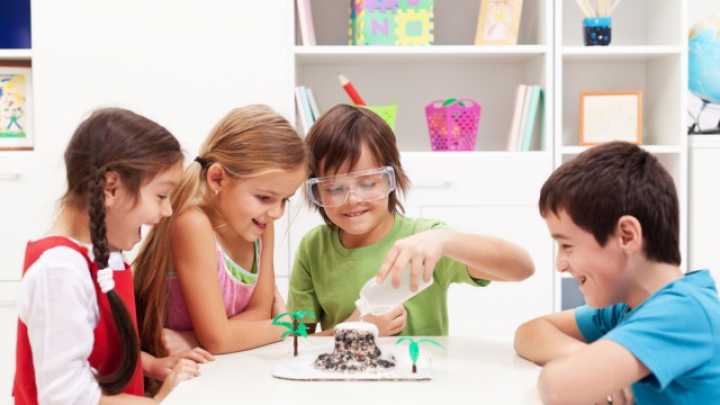
Fun Physics Experiments to Try at Home

Physics is often referred to as the subject that can’t make up its mind deciding whether if it wants to be part of mathematics or science. And if you have encountered this subject (chances are that you have as this is often mandatory in most schools), then you will most likely agree to this description.
Children often dread the subject due to its unique way of solving problems through equations. However, it is very important to learn about this branch of science as it can be useful on different occasions.
The best way to make your child get interested in physics is by providing fun yet educational experiments to help inspire him/her to learn about the subject more. This article will give you a few fun experiments you can try a home to help your child develop an interest in physics.
What is physics?
Physics is a branch of science that deals and focuses on the properties of matter and energy. It is then divided further more into smaller branches that deal with different areas such as mechanics, heat, light and other radiations, sound, electricity, magnetism, and the structure of atoms.
What good will physics do you?
Physics is much more than what meets the eye as it has helped humanity prosper and helped build the society we live in today. The world would have a completely different look if physics had not advanced and aided us advance over the past few centuries. Here are other areas where physics has helped us:
• Help us understand why a phenomenon occurs
Mathematics and science work hand in hand to help us explain and understand certain phenomena. It is only through our knowledge of magnetism have we uncovered the truth about the Earth’s magnetic field and why a compass arrow always points north.
• Helped us create engines
Just like any branch of science, physics has its own fair share of contributions when it comes to the advancements of technology. One of these contributions is the creations of the modern engine.
A mixture of fluid mechanics, chemistry, and understanding of the principles of physics has helped us create an engine that uses the linear motion produced by fuel and combustion into circular motion of the pistons which gives the engine power.
• Makes lives easier
Science was made in order for us human beings to understand natural phenomenon. As we have advanced further into the realm of science, we have created a whole new purpose for it: to make our lives easier. Imagine having no air conditioner on a hot summer day, or needing to climb up a mountain just to get ice to col your water.
These would be very tedious situations by today’s standards, and that is because we have been living a life f comfort thanks to science and physics.

Physics experiments you can try out
Now that you feel like you want your child to take an interest in physics, you will need to spark his/her curiosity about it.
1. Fire-proof balloon
The first experiment you can do is a very simple one and only need 3 materials. These are a balloon, water, and a candle. The procedure is quite simple as well.
Fill a balloon with water until the water occupies about ¾ of the balloon’s size or until you it has increased its size by 3 times. Then blow some air into the balloon to make the ratio of materials in the balloon into ¾ water and ¼ air.
Then, light a candle and place your balloon over the flame of the candle. Notice how the balloon doesn’t pop even if you placed it directly on top of a candle? Congratulations! You now have a waterproof balloon.
This waterproof balloon works because the water inside the balloon has very high specific heat. Specific heat is the measure of how much energy is needed t raise a molecule’s temperature by 1 degree Celsius. The higher the specific heat, the harder it is to heat an object. The water absorbs the heat produced by the flame away from the balloon and keeps the balloon from reaching the temperature where it pops.
However, you should be careful not to place it in the flame for too long as there will be a time where the water can no longer absorb heat and the balloon will pop eventually.
2. Makeshift lava lamp
The next experiment is a new twist to the commonly known “water and oil doesn’t mix” phenomenon. All you will need is water, oil, a clear container, food color, and salt.
Pour water in the clear container until it occupies 2/3 of the container. Then mix the oil and food color and pour it inside the container as well. After you have finished all the preparation, it is time to add the magic ingredient: salt. Pour salt over the solution and watch as the blobs of coloured oil fall into the bottom of the container. Watch how they defy the law of buoyancy in front of your eyes.
The reason why these blobs of oil can fall to the bottom of the container when they usually only float in the surface of water because it has mixed with salt. Oil is generally lighter than water, which is why they float at the surface. But once it has mixed with salt, the mixture becomes heavier than water, thus falling into the bottom of the container.
And don’t worry if you want to see another spectacular show of coloured blobs floating in the water. Just wait for a few minutes until the salt has dissolved and the coloured blobs of oil will float back up to the surface again.
3. Gelatine prism
If you want a fun experiment that deals with light, then you should try this gelatine prism experiment. All you will need are water, gelatine (the clear kind), a pan, and a flashlight.
Heat up a pan and place ½ of the recommended amount of water stated by the gelatine packet. Then add the gelatine mix and stir it continuously until the gelatine is fully dissolved. Place it in a large container to cool and once it has solidified, cut it into prism-like shapes. (A regular square gelatine cut diagonally will create two prisms)
The next step is to close the lights and curtains then shine a flashlight on your gelatine prism. Watch how white light gets split up into the colours of the rainbow after it has hit the prism. Or you can also point a laser pointer at the gelatine prism and see how light bends.
This experiment works because a prism does not necessarily have to be a glass. Any clear material which can refract light enough can be shaped and treated as a prism. Even water droplets can sometimes act as a prism and split up white light to create a rainbow.
4. Whirlpool of wonder
The nest experiment in our list is the whirlpool experiment. And don’t worry; you do not need to go to the pool for this experiment. All you will need are two pieces of 2 litre bottles, a washer, water, and duct tape.
Pour about 1.5 litre’s worth of water into one of the bottles and place the washer at the mouth of that bottle. Place the other bottle in an upside-down position on top of the first bottle and tape their mouths together with duct tape. Make sure that is tightly secured so no water can escape. The bottles should look like an hourglass after you are done. Flip the bottles over and watch as a small vortex appears inside your makeshift hourglass.
The vortex (or whirlpool) occurs because the ac of flipping the bottles displaces the water inside. The water naturally wants to fall towards the bottom bottle but the flow is blocked by the washer. Since the water has nowhere yet to go, they travel in a circular motion. The water around the edges spins faster and creates a whole in the middle, which creates vacuum. That vacuum becomes visible because of the water in the bottle san you perceive it as a whirlpool.
5. Air blaster
If you want your child to learn how air and air pressure works, then this experiment will be perfect for you. All you will need are a bottle, balloon, rubber bands, a pair of scissors, and a lightweight target.
First, cut the bottom of the bottle so that it will look like a funnel. Then cut the mouth of a balloon with your scissors and place it at the bottom of the bottle. Secure the balloon in place with a few rubber bands. Now place a lightweight target in front of your child and have him/her pull the balloon backwards. After releasing the balloon, a gush of air will flow out of the bottle which will knock the target down.
The secret behind the air blaster’s shooting capabilities is due to air pressure. When you pull the balloon backwards, it creates a small vacuum that sucks in nearby air. This air is accumulated in the bottle and once the balloon is released, the air that occupies the area where the balloon was stretched will be forced to move forward and out of the bottle. But because of the small opening of the bottle, the air condenses in the opening and shoots out of the bottle with incredible force.
Conclusion
If your child has developed a liking to physics and wants to learn more, then you might want to hire a private tutor to help him learn the subject better. Lucky for you, you have stumbled upon the right place. FamilyTutor is Singapore’s leading home tuition agency with thousands of highly skilled and capable tutors. We offer tuition on a variety of subjects including Math, Chemistry, Biology, and many more.

Carelle
Carelle is a teacher who has been through the ups and downs of the teacher and learner life. She wishes for every learner to gain educational satisfaction that will help embody the people they want to be in the future.
Tell Carelle Below What You Think About Her Post!

About FamilyTutor!
FamilyTutor is an established home tuition agency in Singapore! We match suitable home tutors for our clients not just to improve the students' academic grades, but also to build a strong rapport and meaningful relationship with the students and even the their whole family. FamilyTutor put every student in good hands!
If you need an excellent home tutor, feel free to call/WhatsApp us at +65 8777-2168! Our matching service is free!
Related Posts!
Follow Us On Facebook!
Our Service!
- Home Tuition in Singapore
- Home Tutor in Singapore
- Home Tuition Rates in Singapore
- Preschool Home Tuition
- Primary School Home Tuition
- PSLE Home Tuition
- Secondary School Home Tuition
- ITE Home Tuition
- N Level Home Tuition
- JC Home Tuition
- A Level Home Tuition
- Polytechnic Home Tuition
- University Home Tuition
- A-Math Home Tuition
- Biology Home Tuition
- Chemistry Home Tuition
- Chinese Home Tuition
- Economics Home Tuition
- English Home Tuition
- Geography Home Tuition
- H2 Chemistry Home Tuition
- Higher Chinese Home Tuition
- Hindi Home Tuition
- History Home Tuition
- IB Chemistry Home Tuition
- IP Chemistry Home Tuition
- IP Math Home Tuition
- IP Home Tuition
- JC Chemistry Home Tuition
- Literature Home Tuition
- Malay Home Tuition
- Math Home Tuition
- O Level Chemistry Home Tuition
- O Level Math Home Tuition
- O Level Physics Home Tuition
- Online Home Tuition
- Physics Home Tuition
- POA Home Tuition
- Science Home Tuition
- Tamil Home Tuition
Education Levels
National Exams
Math & Science Subjects
Language Subjects
Japanese Tuition
Korean Tuition
German Tuition
Humanities Subjects
Social Studies
Chinese Literature Tuition
About Us
FamilyTutor is an established and the people’s favourite home tuition agency in Singapore! We match a suitable tutor for you not just to improve the student’s grade, but also to build a good rapport and meaningful relationship with the student and even with the student’s whole family! With FamilyTutor, every Singaporean son & daughter is in good hands.
Contact Us
- 8777 2168
- 8777 2168
- Mon-Sun 9am-10pm (Including PH)
- contactus@familytutor.sg
- 17 Petir Road Singapore 678278



